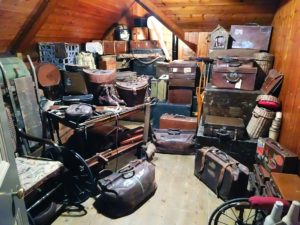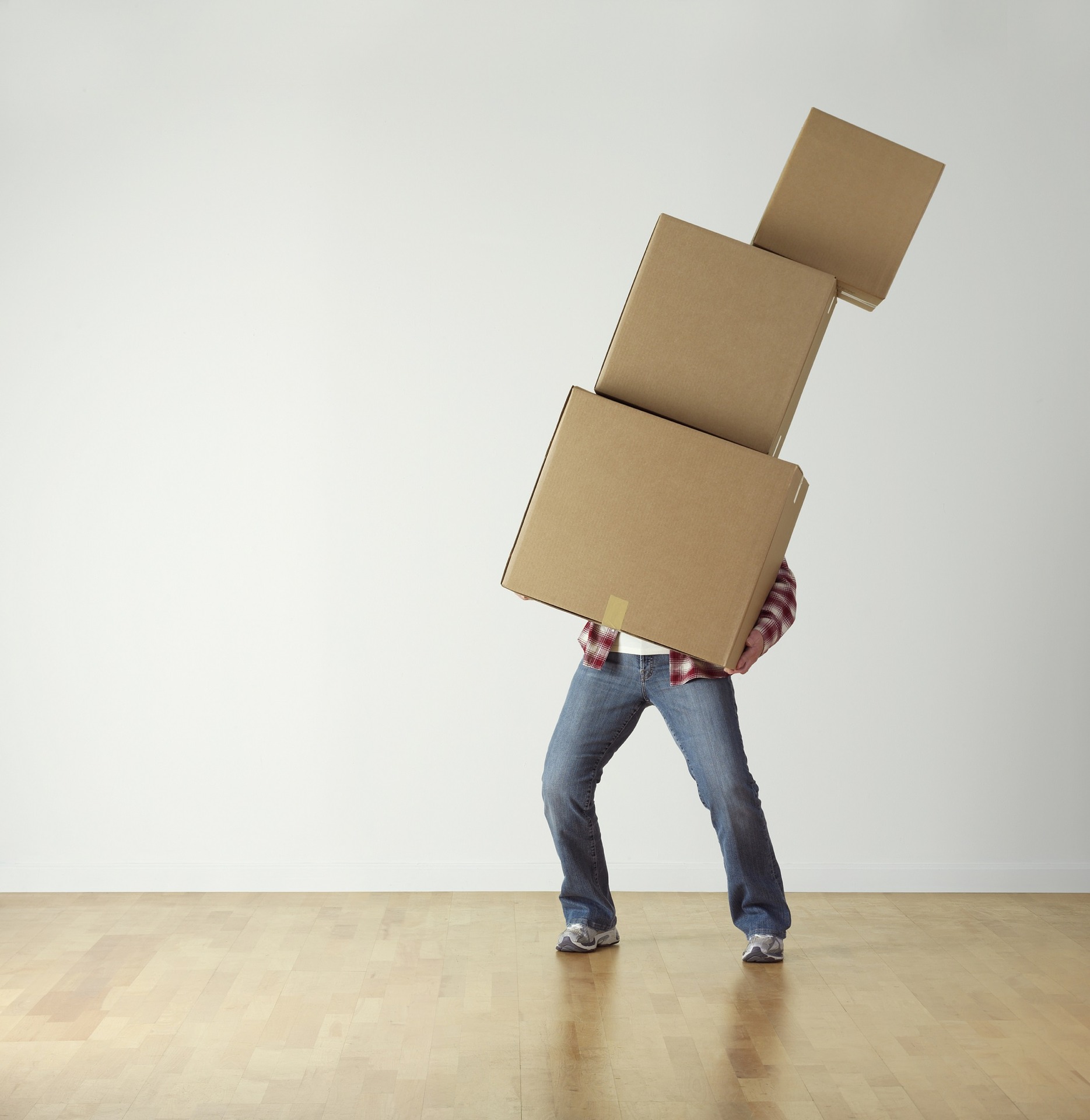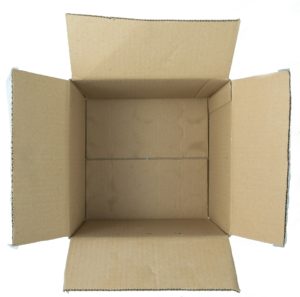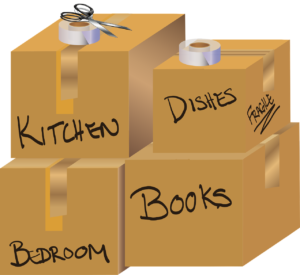 Congratulations on your new home! Now you just have to figure out how you’re going to pack and move your belongings without breaking the bank, your fragile items, and your back. That’s why we put together this list of easy moving and packing tips that will make your move simple.
Congratulations on your new home! Now you just have to figure out how you’re going to pack and move your belongings without breaking the bank, your fragile items, and your back. That’s why we put together this list of easy moving and packing tips that will make your move simple.
Get rid of everything
Okay, maybe not everything. The more unused and unnecessary items you eliminate from your home, the less stuff you’ll have to pack up, haul across town, unload and organize. Make room by selling or donating unwanted items.
Research professional moving companies
Research is never fun. Yelp and Google will overwhelm you with the volume of choices for household moving companies to hire. A moving company can often make or break your entire moving experience, so it’s important to get it right. The more effort you put into finding a reputable company with excellent customer service ahead of time, the less hassle you’ll have on moving day. Also, double-check the moving company you want to hire is licensed with the state you’re in. Read the company’s list of services, fine print, and refund or damage policies, too.
Pick the right moving day
Hire your movers at least a month out so you can plan accordingly. If you have a flexible schedule, play around with potential moving dates and try to find the cheapest time of the month to make an appointment. Moving companies are busiest on weekends, so if you can skip the Saturday chaos, schedule your move for a Tuesday and you might get a significant discount.
Map out the best way to get to your new home
Whether you’re moving to a brand new city, across the country, across state lines, or just to a neighboring town, you’re going to need an efficient travel route so you don’t waste your move-in day sitting in traffic or pulling over three different times to type an address into your GPS. Look up potential highway construction schedules ahead of time and take traffic, detours, and necessary stops into account when you’re making your plan.
Create a master moving-to-do list
When you move homes, you end up having a million different things to do and remember. Don’t let all these tasks and important reminders slip your mind. Write them down somewhere. Put them in the Notes App on your phone or go old school with a pad of paper.
Put moving tasks on your calendar
Take your organization a step further and spend an evening mapping out everything you have to do. Get an oversized calendar and mark the empty spots with important daily tasks to prepare for your move.
Check to see if you have original boxes for your electronics
You might think your flat screen TV could withstand a 30-minute drive across town in a cardboard box but it’s still a fragile piece of technology. The best way to transport your electronics is in the original boxes they arrived in when you purchased them. Check to see if you stashed these boxes. If you don’t have them, quilted blankets, bubble wrap, and sturdy tape all work well to protect TVs and similarly delicate items.
Go to the hardware store
Make a list and brainstorm every possible item you will need to help you get through the moving process. Nothing is too insignificant. Packing tape, cardboard boxes, packing paper, extra screws, a measuring tape, a new industrial-sized broom, you name it. Buy it all in one big haul.
Schedule Disconnect Times
Call your cable, internet, electricity, and gas providers at least a week ahead of your move to figure out when you need to shut everything off. Make sure you leave enough time in your schedule to gather any necessary items – like cords, remotes, or cable boxes – you may need to return.
Call in favors early
If you’re relying on friends and family to help with your move, be courteous and give them a month’s notice. Do the same with babysitters for your children.
Once again, congratulations on your new home! Figuring out how you’re going to pack and move your belongings without breaking the bank, your fragile items, and your back can be difficult. Here are more easy moving and packing tips that will make your move simple.
Change your address a week before you move
This is one of those things everyone forgets to do until they’re two weeks into life in a new home and they realize a package they’re expecting still hasn’t arrived. Change your address ahead of time so your bills, credit card statements, and packages can arrive on time without hassle.
Label moving boxes efficiently
The key to finding your stuff easily is labeling all your packed boxes accurately and clearly. When you’re stacking boxes in a van or car you won’t be able to see their tips, so make sure you label the sides as well. But don’t stop there. Label the boxes by category and by room to speed up the unloading process.
Create a number system
If you want to take your box labeling a step further, create a number system. As you pack up a box, take note of every item inside of it. Write the list in a Google doc and then give the box a number. This strategy has two major benefits:
- You can go straight to box #16 with the plunger instead of digging through every “Bathroom” box just to find it.
- You’ll know the total number of boxes you’re transporting so you can check to see if one goes missing or is stolen.
Use small boxes for heavy items
It sounds obvious, but if you’ve ever known the struggle that is carrying a large cardboard box stuffed full of college textbooks across a parking lot, then you also know this advice cannot be overstated. Fill your small boxes with heavier items and use large boxes for light things like decorative pillows, towels, and linens.
Use packing tape
Not to be confused with duct tape, packing tape is the heavy-duty, insanely sticky clear tape you see at the post office. Always make sure your boxes have tops, but don’t do the interlocking fold method with the flaps of your box tops – just tape them closed. It’s much more secure this way.
Protect fragile items
Use packing paper to pad all your fragile dishware and decorative items. Stuff it inside glasses, wrap it around vases and bowls, and shove it between your dishes and the side of your boxes. Make sure you wrap each of your fragile items separately, so they’re fully cushioned. If you don’t have packing paper, opt for bubble wrap or a quilted blanket.
Pack dishes vertically
Don’t stack your dishes horizontally inside a box. Instead, wrap your plates and bowls in packing paper, gently place them into a box on their sides like records, and then fill the empty spaces with bubble wrap to prevent cracking and breaking.
Take pictures of your electronics
Before you take them apart and pack them up, take a few pictures of the back of your electronic devices – the cord situations, if you will. Having these pictures will make it that much easier to set up your TV or monitor as soon as you move in.
Make copies of important papers
Pack a separate box or briefcase with copies of all your important documents in case of an emergency. Though it might be a tedious project to scan or copy every birth certificate, passport, social security card, proof of insurance paper, and tax claim, you don’t want to risk damaging the only version of your papers in transit.
Figuring out how you’re going to pack and move your belongings without breaking the bank, your fragile items, and your back can be difficult. Here are more easy moving and packing tips that will make your move simple.
Set aside cleaning supplies for moving day
Set aside a broom, mop, dustpan, duster, sponge, cleaning products, paper towels, and old rags for wiping the grimy, hidden surfaces you could never get to when all your stuff was in the way.
Stop buying groceries a week before you leave
To save you the guilt of throwing away perfectly decent food, stop buying groceries a week or two before you’re scheduled to move. Try to make meals at home to use all the food you have left.
Defrost your fridge at least one day before you move
Take the time to thoroughly clean your fridge and wipe away all the liquid before you haul it to your new home. No one wants a grungy, mildewy fridge in their new home.
Load boxes from the same room together
Stack and load boxes in groups according to the rooms indicated on the labels. Put all the kitchen stuff together, all the bedroom stuff together, and all the living room stuff together. That way, you can unload all the boxes from the same rooms at the same time.
Load heavy furniture into the moving truck first
Load your heavy furniture first, like sofas and sectionals, then finish with lighter items. Don’t be afraid to flip things over. Couches actually transport well on their sides and save a ton of space in the process.
Pack a clear box with things you’ll need right away
This can include toilet paper, a shower curtain, hand soap, towels, sheets, snacks or whatever else you think you’ll need for the first day or night in your new home. Having a few essential items on hand will make you feel more comfortable and prepared to tackle unpacking everything else.
Pack a personal overnight bag
Chances are you won’t get everything unpacked on the first day, so bring whatever you need to feel relaxed and settled on your first night. A change of clothes, your toiletries, a water bottle, and your laptop can go a long way in making your new place feel like home.
Keep Ziploc bags handy
Keep a stash of Ziploc bags in your purse or backpack for the big moving day. You can use the bags to store doorknobs, tiny screws and brackets, luggage keys, or other small, easily forgettable items.
Make the beds first
We recommend making your beds as soon as you move in. That way, instead of worrying about finding the right set of sheets at the end of a long day, you can just hop into bed.
If you Haven’t sold your house yet, Core Properties will buy your current home as-is for cash.
We take all of the work out of selling your home and pay cash fast.
























